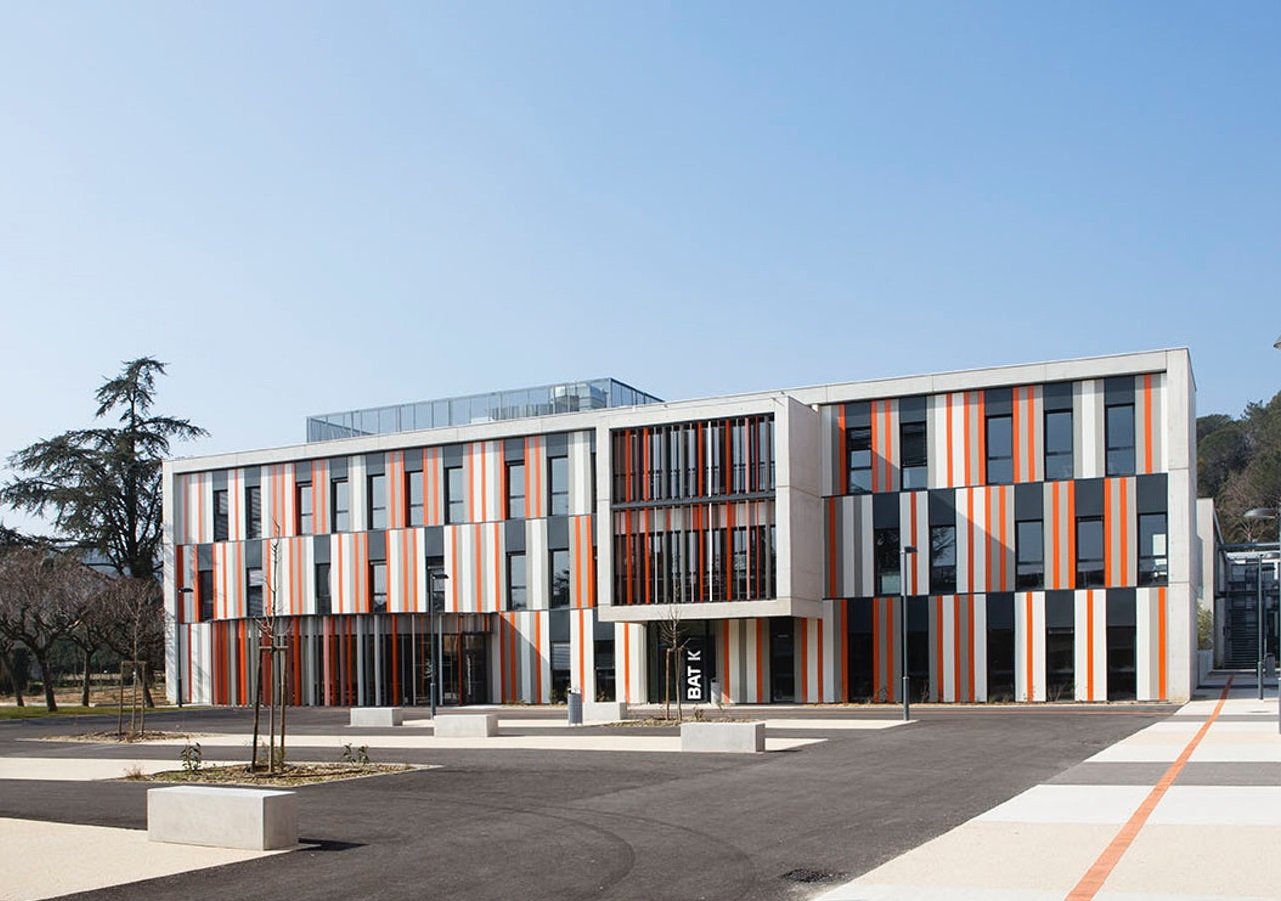#8812. Dynamic Striped Façade: Modern Building with Rhythmic Vertical Articulation

This modern administrative building with its expressive striped façade represents a striking example of contemporary architecture. The three-story structure with clean geometric forms stands out due to its rhythmic vertical pattern of alternating orange, white, and dark gray panels. This technique creates a dynamic visual effect, giving the building a unique individuality.
The façade demonstrates masterful use of color accents – the orange color enlivens the otherwise restrained palette, creating a memorable image. The central part of the building is emphasized by a glass entrance and vertical elements that interrupt the horizontal composition. The top floor is crowned with a glass superstructure, which visually lightens the massiveness of the construction and provides natural lighting to the upper spaces.
The architect skillfully works with proportions: the regular rhythm of vertical panels is broken into larger segments, preventing monotony. Glass surfaces contrast with opaque panels, creating an interplay of light and shadow. It's interesting to observe how the façade elements form a unified composition while maintaining a certain freedom and asymmetry.
For private construction, a similar approach to façade design can be adapted on a more modest scale: using vertical panels of different colors helps visually "elongate" the building, while contrasting color accents can highlight architecturally significant elements. The combination of different materials – for example, wood, metal, and plaster of different shades – can create a similar effect of rhythmic articulation of the façade even in a small private home.